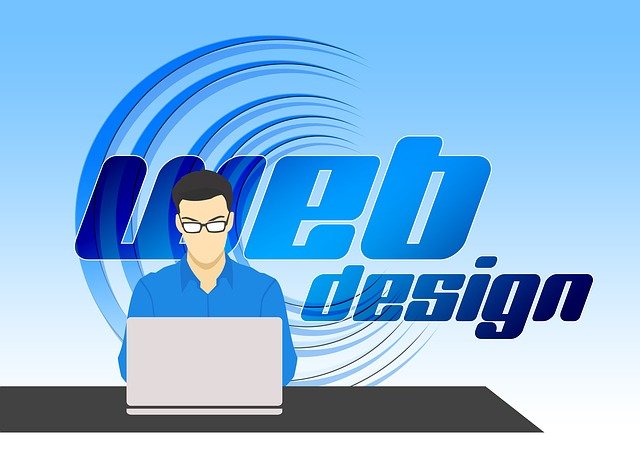When web designers are talking about the right fonts, layouts, colour and contrasts, they actually mean to explain how the User Interface of a website shall define its success in business. Content, design and functionality are all part of the same concept.
To put it in a sentence, UI is the single most important factor that decides whether your website is capable of bringing in the relevant traffic and conversions. It also creates space for customer retention and brand loyalty in the long run.
Designing the perfect UI involves closely studying your customer’s behaviour and mapping out their journey right from the landing page to your choice of action. It can be anything right from signing up for an email list, downloading a brochure, to making a sale.
Let’s look at some reasons why UI holds such great importance in the world of web design.
1. The Presentation Matters
The difference between a luxury haircut and a discounted one is the experience they offer in terms of packaging and service. Web design, in a similar manner, needs to be easy to navigate and aesthetic to look at. UI accumulates the resources to speak with the customers on their level, making them both comfortable and primed for conversion.
2. Content Still Rules (Alongside Design)
The most powerful tool of marketing is content. It creates an effective communication channel that addresses the user’s needs and delivers a timely solution in the form of information, education, entertainment or promotion. Nevertheless, content can never really shine out if it is written in a shabby, illegible manner. The user interface serves as a background to deliver content that pleases the audience on a holistic level.
3. Right Thing. Right Time. Right Place.
Website navigation is a direct result of an optimised user interface. It essentially allows the visitor to find the elements they are looking for without wandering about the entire digital space. A direct and straightforward UI gives users all the more reason to stay on the website and spend their precious time exploring its offerings. With the right set of navigational cues, you can direct the consumer to the right button, form or graphic.
4. Complements the User Experience
Like it or not, user experience and user interface are as closely related as two atoms. While UX derives its functions from availability, usability and accessibility, UI finds a way to support that through the content and design. As many would say, the user interface forms the foundation on which UX can be built upon. On the other hand, an uncoordinated UI can just as easily cause significant disruptions in the customer journey, thus rendering an astronomical bounce rate.
5. Clarifies the Brand Vision
Branding is not just putting on your logo on an array of merchandise. In the digital world, branding is the cumulative sum of everything you do on the internet. This includes your website user interface. It works in line with the behaviours and preferences of the ideal consumer, further shedding light on what the brand represents. A well-designed UI can be the differential factor between being just another business to being the business in today’s market.
6. Improves Customer Satisfaction
Since both UI and UX work in sync, customer satisfaction is indeed the base of setting up an interface as well. It refines their journeys to exceed their expectations at every front. Additionally, with an easy-to-use website, customers are often seen coming back for more and advocating its benefits to others. The key here is to blend the aesthetics with the functionalities to lend a complete experience.
7. Accentuates SEO Efforts
As you may know, UI is a contributing factor to SEO in the form of higher dwell times, user engagement and conversion rates. A great UI essentially conveys to the search engines that the website is worth visiting and holds all the requisite information for the relevant keywords. A beautiful visual design, coupled with readable content, brings in the users, spawning the search engine algorithms to rank you higher on their pages.
8. Increased Conversions
Predominantly, the sole purpose of creating a website is to rake in sales and revenue. Customer conversion is the metric that decides how well your digital space is performing in financial terms. A well-designed UI creates brand recognition and recall by creating a great impression on the user’s mind. This translates to higher retention, attention spans and eventually profit-making conversions. In a world where the users have a plethora of choices, UI helps them select the one that is most beneficial to you.
9. Combines All the Aspects of Design
Website design is the consequence of visual design, interactive design and information architecture. User interface culminates all these aspects in a sophisticated and balanced manner to deliver what you may find as the website’s face. Enhancing the UX and streamlining the process helps both the developers and customers find exactly what they need for a great experience.
10. Anticipates Customer Expectations
Website UI is based upon the idea of delivering a format that is user-oriented in all its ways. This requires the developers and designers to dive deep into the end-consumer’s thought process, giving due recognition to their expectations. Accordingly, all the features, forms and functions are put in place to align with the research insights, creating a pleasing environment for the customers.
Ending Notes
There are three elements to a complete website design – great UI, meaningful UX and inculcated customer feedback. Although the third one is not very often discussed, it is indeed a vital factor that decides your digital business’s success or failure.
After implementing your UI and UX designs, don’t forget to conduct A/B testing on your pages to understand how well your end consumer reacts to your propositions. About UI, until the time you’re adding features that are user-oriented and help in refining the customer journey across the website, you’ll be good to go. Just remember to think of the concept as a piece of the overall puzzle





